Black spot in mole. 9 Sneaky Warning Signs of Melanoma: Recognizing Atypical Skin Cancer Symptoms
What are the lesser-known signs of melanoma skin cancer. How can you identify unusual melanoma symptoms that don’t fit the typical ABCDE criteria. Which unexpected areas of the body should you check for melanoma growth.
Understanding Melanoma: Beyond the Typical Mole
Melanoma is a serious form of skin cancer that develops in melanocytes, the cells responsible for producing skin pigment. While many people associate melanoma with large, irregularly shaped moles, the reality is that this cancer can manifest in various ways, some of which are not immediately apparent.
Recognizing the diverse presentations of melanoma is crucial for early detection and treatment. Let’s explore some of the less common but equally important signs that might indicate the presence of this potentially life-threatening skin cancer.
The ABCDE Rule: A Starting Point for Melanoma Detection
The ABCDE rule is a well-known guideline for identifying potential melanomas:

- Asymmetry: One half of the mole doesn’t match the other
- Border: Irregular, ragged, or blurred edges
- Color: Variation in color within the same mole
- Diameter: Larger than 6 millimeters (about 1/4 inch)
- Evolving: Changes in size, shape, or color over time
While these criteria are helpful, they don’t cover all possible manifestations of melanoma. Some atypical presentations can slip through the cracks of this conventional wisdom.
Amelanotic Melanoma: The Colorless Threat
When we think of melanoma, we often picture dark, pigmented lesions. However, amelanotic melanoma breaks this mold by presenting as a colorless or very lightly pigmented growth.
Amelanotic melanomas can appear as:
- Pale, flesh-colored bumps
- Slightly reddish patches
- Pinkish or whitish lesions
Due to their lack of pigmentation, these melanomas are often mistaken for other skin conditions, leading to delayed diagnosis. It’s crucial to pay attention to any new or changing skin growths, regardless of their color.
Subungual Melanoma: Hidden Beneath the Nails
Subungual melanoma develops under the nails and can be easily overlooked or mistaken for a bruise or fungal infection. This type of melanoma is more common in people with darker skin tones but can affect anyone.
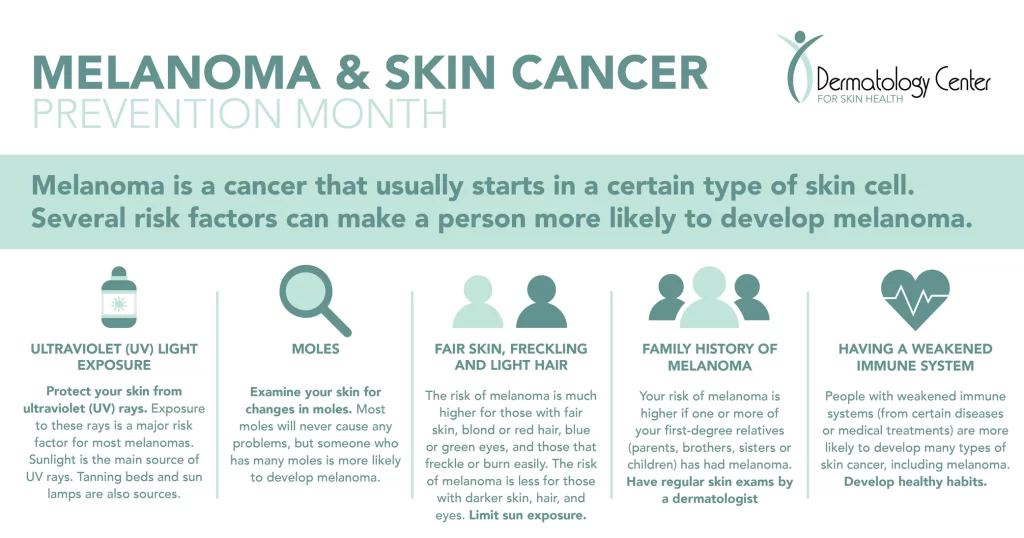
Key indicators of subungual melanoma include:
- A dark streak under the nail that doesn’t grow out with the nail
- Darkening of the skin around the nail
- Splitting or bleeding of the nail
- Pain or discomfort in the affected area
If you notice any unusual changes in your nails, especially if they persist or worsen over time, consult a dermatologist promptly.
Nodular Melanoma: The Fast-Growing Variant
Nodular melanoma is an aggressive form that grows vertically into the skin rather than spreading across its surface. This type of melanoma can develop rapidly, sometimes within weeks or months.
Characteristics of nodular melanoma include:
- A firm, raised bump on the skin
- Uniform color (often black, blue, or red)
- Smooth, even borders
- Rapid growth
- Tendency to bleed or ooze
Due to its fast growth and departure from the typical ABCDE criteria, nodular melanoma can be particularly dangerous if not detected early.
Mucosal Melanoma: Beyond the Skin’s Surface
While most melanomas develop on the skin, mucosal melanoma forms in the mucous membranes that line various parts of the body. These areas include the mouth, nasal passages, anal region, and genitals.
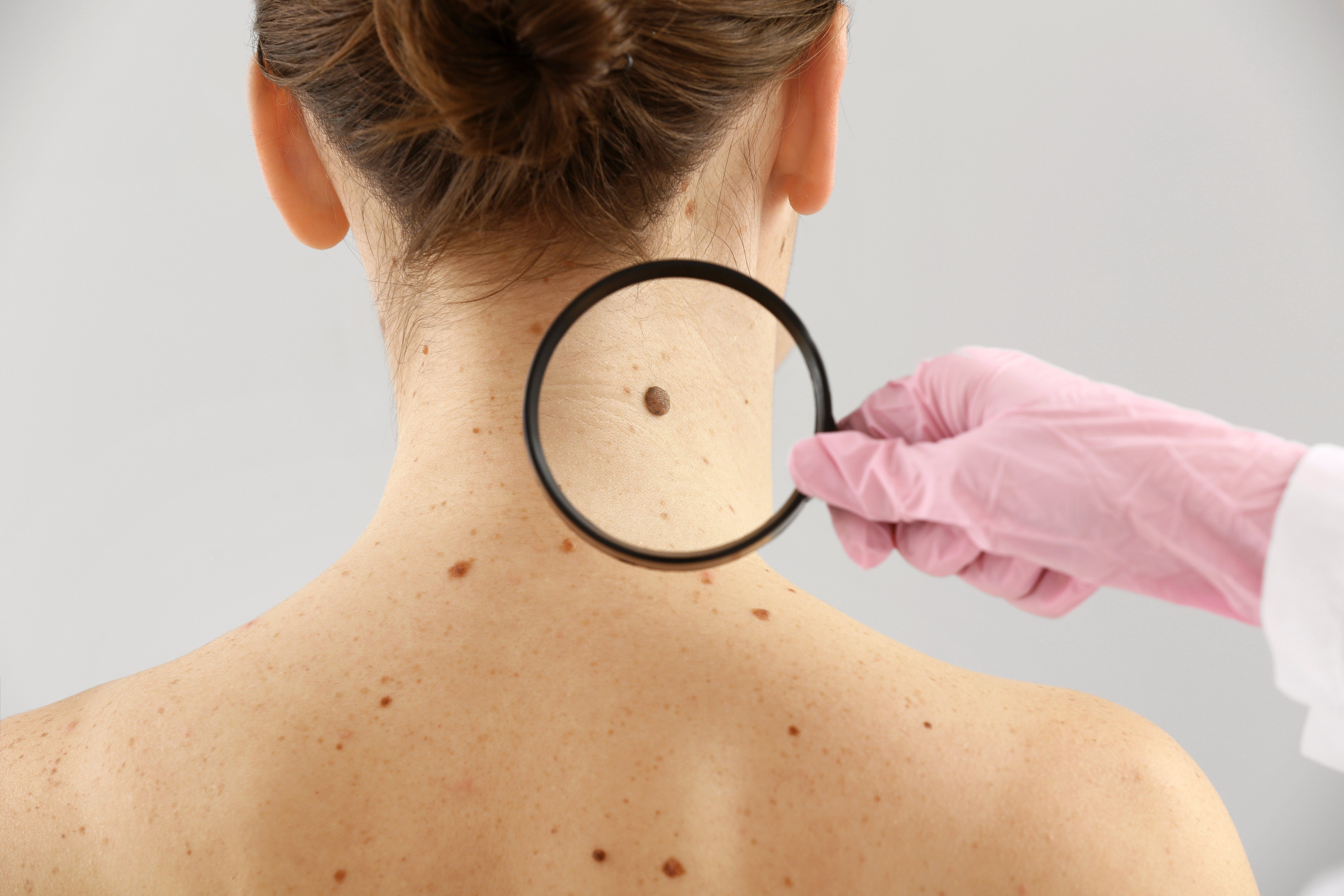
Signs of mucosal melanoma may include:
- Dark spots or patches in the mouth or nasal passages
- Unusual growths or discoloration in the genital or anal area
- Difficulty swallowing or persistent sore throat (for oral melanomas)
- Nosebleeds or nasal congestion (for nasal melanomas)
Due to their hidden locations, mucosal melanomas are often diagnosed at later stages, making regular check-ups and awareness of any unusual symptoms crucial.
Ocular Melanoma: The Silent Threat to Vision
Ocular melanoma, though rare, is the most common type of eye cancer in adults. It develops in the cells that produce pigment in the eye and can affect various parts of the eye structure.
Potential signs of ocular melanoma include:
- Changes in vision, such as blurry or distorted sight
- Dark spots on the iris
- Floaters or flashes of light
- Loss of peripheral vision
- A growing dark spot on the white part of the eye
Regular eye exams are essential for detecting ocular melanoma early, as symptoms may not be noticeable in the initial stages.

Desmoplastic Melanoma: The Scar-Like Deception
Desmoplastic melanoma is a rare subtype that often appears as a non-pigmented lesion, making it particularly challenging to diagnose. It frequently develops on sun-damaged skin, especially on the head and neck of older individuals.
Characteristics of desmoplastic melanoma include:
- A firm, pale or flesh-colored lesion
- Scar-like appearance
- Indistinct borders
- Potential for neurotropism (spread along nerve fibers)
Due to its resemblance to benign skin changes, desmoplastic melanoma is often discovered at later stages, emphasizing the importance of professional skin examinations.
The Importance of Regular Skin Checks
Given the diverse and sometimes subtle presentations of melanoma, regular skin self-examinations and professional dermatological check-ups are crucial. Pay attention to any new or changing skin lesions, regardless of their appearance or location on your body.
When performing self-examinations, remember to check:
- All areas of your skin, including hard-to-see spots like your back, scalp, and between toes
- Nail beds and cuticles
- Palms of hands and soles of feet
- Mucous membranes (as much as visible)
- Eyes (look for changes in iris color or vision)
If you notice anything unusual or concerning, don’t hesitate to consult a dermatologist or healthcare provider.

Risk Factors and Prevention
While anyone can develop melanoma, certain factors increase the risk:
- Fair skin
- History of sunburns or excessive UV exposure
- Family history of melanoma
- Presence of many moles or atypical moles
- Weakened immune system
To reduce your risk of developing melanoma:
- Protect your skin from UV radiation with sunscreen, protective clothing, and shade
- Avoid tanning beds and sun lamps
- Perform regular skin self-examinations
- Schedule annual skin check-ups with a dermatologist
- Be aware of your personal risk factors and family history
Advanced Diagnostic Techniques
Dermatologists use various tools and techniques to diagnose melanoma accurately:
- Dermoscopy: A handheld device that provides magnified, illuminated views of skin lesions
- Total body photography: Comprehensive imaging of the entire skin surface to track changes over time
- Confocal microscopy: Non-invasive imaging that allows visualization of skin structures at a cellular level
- Genetic testing: Analysis of tumor tissue to identify specific genetic mutations associated with melanoma
These advanced methods help in early detection and accurate diagnosis, especially for atypical presentations of melanoma.

Treatment Options for Melanoma
The treatment approach for melanoma depends on various factors, including the stage of the disease, location of the tumor, and overall health of the patient. Common treatment options include:
- Surgery: Removal of the tumor and surrounding tissue
- Immunotherapy: Boosting the body’s immune response to fight cancer cells
- Targeted therapy: Using drugs that target specific genetic mutations in melanoma cells
- Radiation therapy: Using high-energy rays to kill cancer cells
- Chemotherapy: Using drugs to destroy cancer cells throughout the body
Early detection and treatment significantly improve the prognosis for melanoma patients, highlighting the importance of awareness and regular skin checks.
Melanoma in Different Skin Types
While melanoma is more common in individuals with fair skin, it can occur in all skin types. In people with darker skin tones, melanoma often appears in less sun-exposed areas:
- Palms of hands and soles of feet
- Under nails (subungual melanoma)
- Inside the mouth
- Genital area
These locations can make early detection challenging, emphasizing the need for thorough skin examinations in all individuals, regardless of skin color.
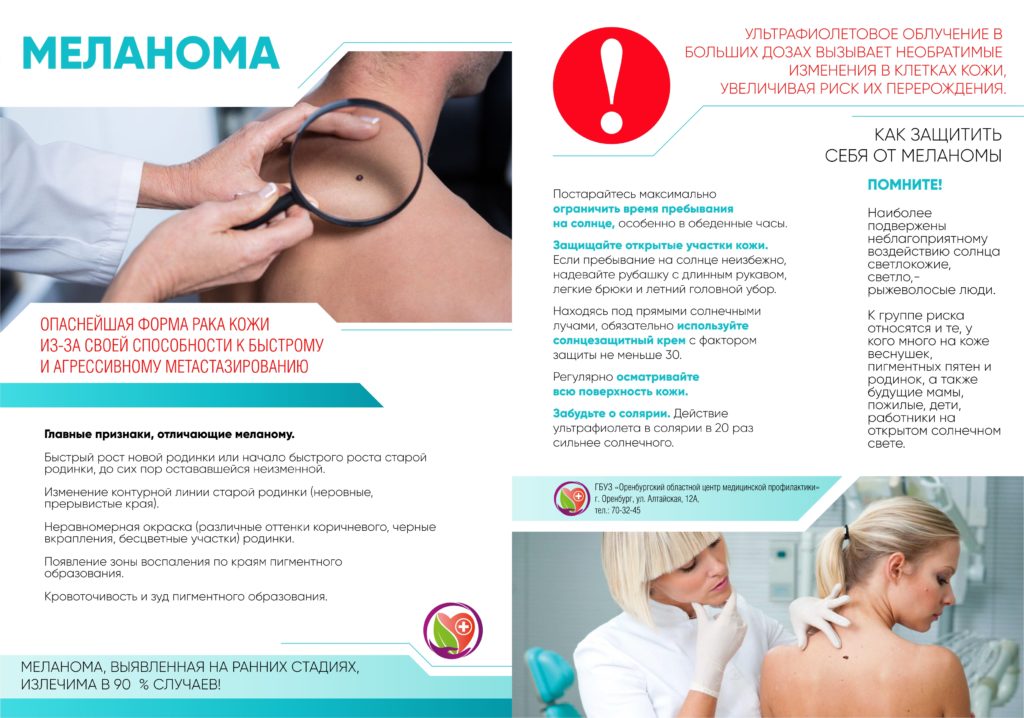
The Role of Technology in Melanoma Detection
Advancements in technology are improving our ability to detect and diagnose melanoma:
- Artificial Intelligence (AI): Machine learning algorithms can analyze skin images to identify potential melanomas
- Smartphone apps: Some apps allow users to track and analyze their moles over time
- 3D imaging: Provides detailed, three-dimensional views of skin lesions
- Telemedicine: Allows remote consultations with dermatologists, improving access to expert opinions
While these technologies show promise, they should complement, not replace, regular in-person dermatological examinations.
The Psychological Impact of Melanoma
A melanoma diagnosis can have significant psychological effects on patients and their families. Common emotional responses include:
- Anxiety about recurrence or spread of the cancer
- Depression related to treatment side effects or changes in appearance
- Fear of sun exposure and outdoor activities
- Stress about regular check-ups and scans
Support groups, counseling, and psychological interventions can help patients and their loved ones cope with the emotional challenges of melanoma diagnosis and treatment.

Melanoma Research and Future Directions
Ongoing research in melanoma focuses on several key areas:
- Improving early detection methods
- Developing more effective and less toxic treatments
- Understanding the genetic and molecular basis of melanoma
- Exploring combination therapies to enhance treatment efficacy
- Investigating strategies to prevent melanoma development and recurrence
These research efforts aim to improve outcomes for melanoma patients and potentially develop preventive measures against this aggressive skin cancer.
The Global Impact of Melanoma
Melanoma is a significant public health concern worldwide:
- Incidence rates vary globally, with highest rates in Australia and New Zealand
- Melanoma rates are rising in many countries, particularly among younger populations
- Economic burden of melanoma treatment is substantial, emphasizing the need for prevention and early detection
- Public health campaigns focus on sun safety and skin cancer awareness
International collaboration in research and public health initiatives is crucial in addressing the global challenge of melanoma.

Conclusion: Vigilance is Key
Understanding the diverse and sometimes subtle ways melanoma can manifest is crucial for early detection and successful treatment. By familiarizing ourselves with these sneaky warning signs and maintaining regular skin check routines, we can significantly improve our chances of catching melanoma in its earliest, most treatable stages.
Remember, when it comes to skin health, knowledge and vigilance are your best defenses. If you notice any unusual changes in your skin, don’t hesitate to seek professional medical advice. Your awareness and proactive approach could make a life-saving difference.
Signs of Melanoma Skin Cancer
- Normal moles
- Possible signs and symptoms of melanoma
Unusual moles, sores, lumps, blemishes, markings, or changes in the way an area of the skin looks or feels may be a sign of melanoma or another type of skin cancer, or a warning that it might occur.
Normal moles
A normal mole is usually an evenly colored brown, tan, or black spot on the skin. It can be either flat or raised. It can be round or oval. Moles are generally less than 6 millimeters (about ¼ inch) across (about the width of a pencil eraser). Some moles can be present at birth, but most appear during childhood or young adulthood. New moles that appear later in life should be checked by a doctor.
Once a mole has developed, it will usually stay the same size, shape, and color for many years. Some moles may eventually fade away.
Most people have moles, and almost all moles are harmless. But it’s important to recognize changes in a mole – such as in its size, shape, color, or texture – that can suggest a melanoma may be developing.
But it’s important to recognize changes in a mole – such as in its size, shape, color, or texture – that can suggest a melanoma may be developing.
The most important warning sign of melanoma is a new spot on the skin or a spot that is changing in size, shape, or color.
Another important sign is a spot that looks different from all of the other spots on your skin (known as the ugly duckling sign).
If you have one of these warning signs, have your skin checked by a doctor.
The ABCDE rule is another guide to the usual signs of melanoma. Be on the lookout and tell your doctor about spots that have any of the following features:
- A is for Asymmetry: One half of a mole or birthmark does not match the other.
- B is for Border: The edges are irregular, ragged, notched, or blurred.
- C is for Color: The color is not the same all over and may include different shades of brown or black, or sometimes with patches of pink, red, white, or blue.

- D is for Diameter: The spot is larger than 6 millimeters across (about ¼ inch – the size of a pencil eraser), although melanomas can sometimes be smaller than this.
- E is for Evolving: The mole is changing in size, shape, or color.
Some melanomas don’t fit these rules. It’s important to tell your doctor about any changes or new spots on the skin, or growths that look different from the rest of your moles.
Other warning signs are:
- A sore that doesn’t heal
- Spread of pigment from the border of a spot into surrounding skin
- Redness or a new swelling beyond the border of the mole
- Change in sensation, such as itchiness, tenderness, or pain
- Change in the surface of a mole – scaliness, oozing, bleeding, or the appearance of a lump or bump
Be sure to show your doctor any areas that concern you and ask your doctor to look at areas that may be hard for you to see. It’s sometimes hard to tell the difference between melanoma and an ordinary mole, even for doctors, so it’s important to show your doctor any mole that you are unsure of.
It’s sometimes hard to tell the difference between melanoma and an ordinary mole, even for doctors, so it’s important to show your doctor any mole that you are unsure of.
To see examples of normal moles and melanomas, visit the Skin Cancer Image Gallery on our website.
Remember, too, that a small portion of melanomas start in places other than the skin, such as under a fingernail or toenail, inside the mouth, or even in the colored part of the eye (iris), so it’s important to show a doctor any new or changing spots in these areas as well.
The American Cancer Society medical and editorial content team
Our team is made up of doctors and oncology certified nurses with deep knowledge of cancer care as well as journalists, editors, and translators with extensive experience in medical writing.
Last Revised: August 14, 2019
American Cancer Society medical information is copyrighted material. For reprint requests, please see our Content Usage Policy.
9 Sneaky Warning Signs of Melanoma You Might Miss
Medically Reviewed
000Z”>Updated Dec 22, 2020
By
Krista Bennett DeMaio
Medical ReviewerRajal Patel, M.D.
iStock
You know what melanoma looks like, right? You’ve probably seen the iconic pictures of a big, brown mole with jagged edges. And while that’s the image that most of us conjure when we think of melanoma, it’s not the only sign of this skin cancer. Some are far less obvious. Melanoma may not be brown; it may not be a mole—it might not even appear on your skin! We talked to top skin cancer experts to pinpoint the sneakiest forms of malignant melanoma.
iStock
In people of color, melanoma doesn’t always show up as a mole. Sometimes it just looks like a dark lesion or patch of dark skin. And it often surfaces in places you wouldn’t expect melanoma to grow: the soles of your feet or the palms of your hands. Melanoma in dark skin is far less common than it is in fair complexions, but when it does happen, it’s often deadlier because it’s typically found at a later stage. One more reason to be attuned to any changes in your body!
One more reason to be attuned to any changes in your body!
iStock
“When melanoma pops up on your nails, it looks more like a bruise under your nail plate,” says Heather Woolery-Lloyd, M.D., director of the skin of color division in the department of dermatology of the University of Miami. Called subungual melanoma, which translates to “melanoma beneath a fingernail or toenail,” this type typically shows up as a dark, vertical line down the length of your nail. Over time, the line may spread, covering more of your nail. It’s also known as acral lentiginous melanoma (ALM), melanoma on your hands, feet, or nails.
iStock
A dark spot on your gums can signal mucosal melanoma, an extremely rare form of the skin cancer that appears on mucus membranes—in your mouth, your nose, genitals, and even within your respiratory and GI tracts. Mucosal melanoma accounts for 1.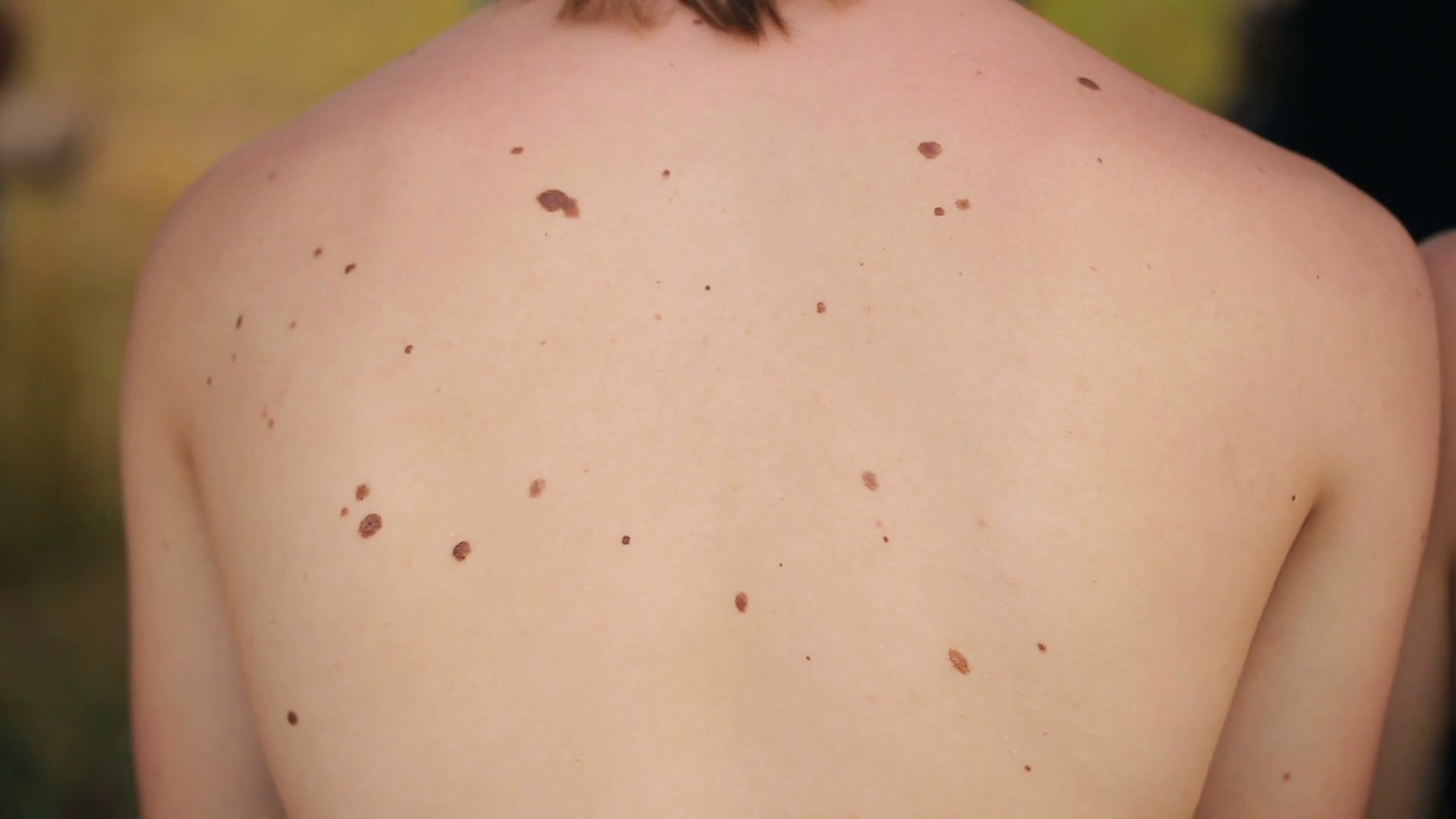 4% of all melanoma cases, but it’s particularly lethal compared to other forms of the disease. Aside from pigmented lesions in these mucous-lined areas, other symptoms may include pain, bleeding, lumps, or changes in your GI tract such as diarrhea or constipation.
4% of all melanoma cases, but it’s particularly lethal compared to other forms of the disease. Aside from pigmented lesions in these mucous-lined areas, other symptoms may include pain, bleeding, lumps, or changes in your GI tract such as diarrhea or constipation.
iStock
A halo might have a positive association (angels!), but when there’s a white ring surrounding a mole, you may want to show it to a dermatologist. In rare cases, the white circle around a mole can signify melanoma. “Depigmentation can appear around normal moles, too, but it can suggest there’s something going on with your immune system,” says Dr. Woolery-Lloyd. So, it’s worth checking it out, especially if the mole with a halo is oddly shaped and asymmetrical.
iStock
We tend to think of melanomas as brown or black in color, but they can be pink or reddish, or lack color all together, appearing as a flesh-colored spot or bump, says Ava Shamban, M. D., assistant clinical professor of dermatology at UCLA-Geffen School of Medicine in Los Angeles. “It’s called amelanotic melanoma,” she explains. It can be particularly tricky to diagnose because it often looks like other forms of skin cancer such as basal cell carcinomas, or even just a cystic pimple or scar tissue.
D., assistant clinical professor of dermatology at UCLA-Geffen School of Medicine in Los Angeles. “It’s called amelanotic melanoma,” she explains. It can be particularly tricky to diagnose because it often looks like other forms of skin cancer such as basal cell carcinomas, or even just a cystic pimple or scar tissue.
iStock
If you’re blanketed in oddly-shaped moles, you have a greater chance of developing melanoma—12 times the risk if you have just 10 atypical moles, according to the Skin Cancer Foundation. “It’s called dysplastic nevi syndrome, which means you have a lot of moles that have some irregular features,” says Ellen Marmur, M.D., Mohs surgeon and associate clinical professor of dermatology at The Mount Sinai School of Medicine in New York City. “Many of us will have dysplastic nevi that are considered mild and moderate, but anything that’s severely dysplastic will become melanoma if left untouched. ”
”
iStock
A new or existing spot that suddenly starts to bleed is a red flag for melanoma or another type of skin cancer. “I once had a patient with melanoma that looked more like a bloody skin tag, as if it had been traumatized,” says Dr. Woolery-Lloyd. “I wasn’t even thinking melanoma at first.” Bottom line: Any mole that’s itching, bleeding, or oozing needs to be checked out by a physician, ideally a board-certified dermatologist, trained to spot these rare forms of melanoma.
iStock
You may have heard to flag moles that have a diameter larger than a pencil eraser (1/4-inch). That’s pretty hard to miss, right? But that doesn’t mean you should ignore the little stuff. “Even though we think of malignant melanoma as being large, it can appear initially as a small, dark spot that just looks creepy,” says Dr. Shamban. Melanomas can be tiny black dots that are no bigger than a pen tip. Any new or existing moles that stand out from the rest in color, shape, or size, should be looked at by a physician.
iStock
Sometimes melanoma is not on your skin, but inside your eye (a.k.a. uveal melanoma). This type is particularly tricky because the tumor isn’t readily visible to, well, the naked eye. You’d need an ophthamologist to spot it. But you may notice a darker spot on the iris of your eye or a change in the shape of your pupil. Other symptoms of uveal melanomas include blurry vision, loss of vision, and floaters (those golden flecks that float around your vision). If you’re experiencing any of these, get thee to an eye doc, stat.
A black mole has appeared: what does it mean?
Do you have a black mole on your body and don’t know if you should panic? In order not to be tormented by doubts, we suggest signing up for a consultation with a dermatologist at the specialized medical center “Lazersvit” in Kyiv. And so that you understand that any new skin formations cannot be ignored, we offer useful information about black nevi and their health hazards.
Black moles appeared on the body: causes
A black mole is an accumulation of melanocytic cells in the skin that are responsible for pigment production. Why they combine into peculiar compounds, even experienced dermatologists cannot say with certainty. There are two versions explaining the appearance of nevi on the skin:
- Moles are formed in humans during fetal development. However, at birth, only 10 percent of them are on the skin. Gradually, they all appear – by the age of 15 they are already 95%. The reasons for the formation of this type of skin pathology are various skin deformities, as well as a genetic predisposition.
- Moles appear on the body under the influence of external negative factors, as a result of protective functions. The factors that cause the formation of black moles include solar radiation, skin trauma, exposure to aggressive chemicals. A black mole may appear due to hormonal imbalance during puberty, during pregnancy.
For most people, it is not so important what caused the appearance of black moles. They are more interested in whether such neoplasms are dangerous, whether it is necessary to run to an oncologist to rule out melanoma, and what to do with such skin pathologies if the doctor has confirmed the good quality of the nevus.
They are more interested in whether such neoplasms are dangerous, whether it is necessary to run to an oncologist to rule out melanoma, and what to do with such skin pathologies if the doctor has confirmed the good quality of the nevus.
Are black moles dangerous?
In the 21st century, perhaps, there is no person left who has not heard about melanoma. The number of registered cases of this disease is growing every year. Among the causes of skin cancer development, oncologists name:
- aggressive UV exposure;
- stress and intense rhythm of people’s lives;
- bad ecology, poor quality food;
- the appearance in everyday life of various aggressive substances that adversely affect the condition of the skin – household chemicals, various synthetic compounds.
The result of the impact of all these factors on the human body is an increased risk of developing cancer. And their top ten includes skin cancer – melanoma.
Of course, most black moles are benign and will never pose a health risk.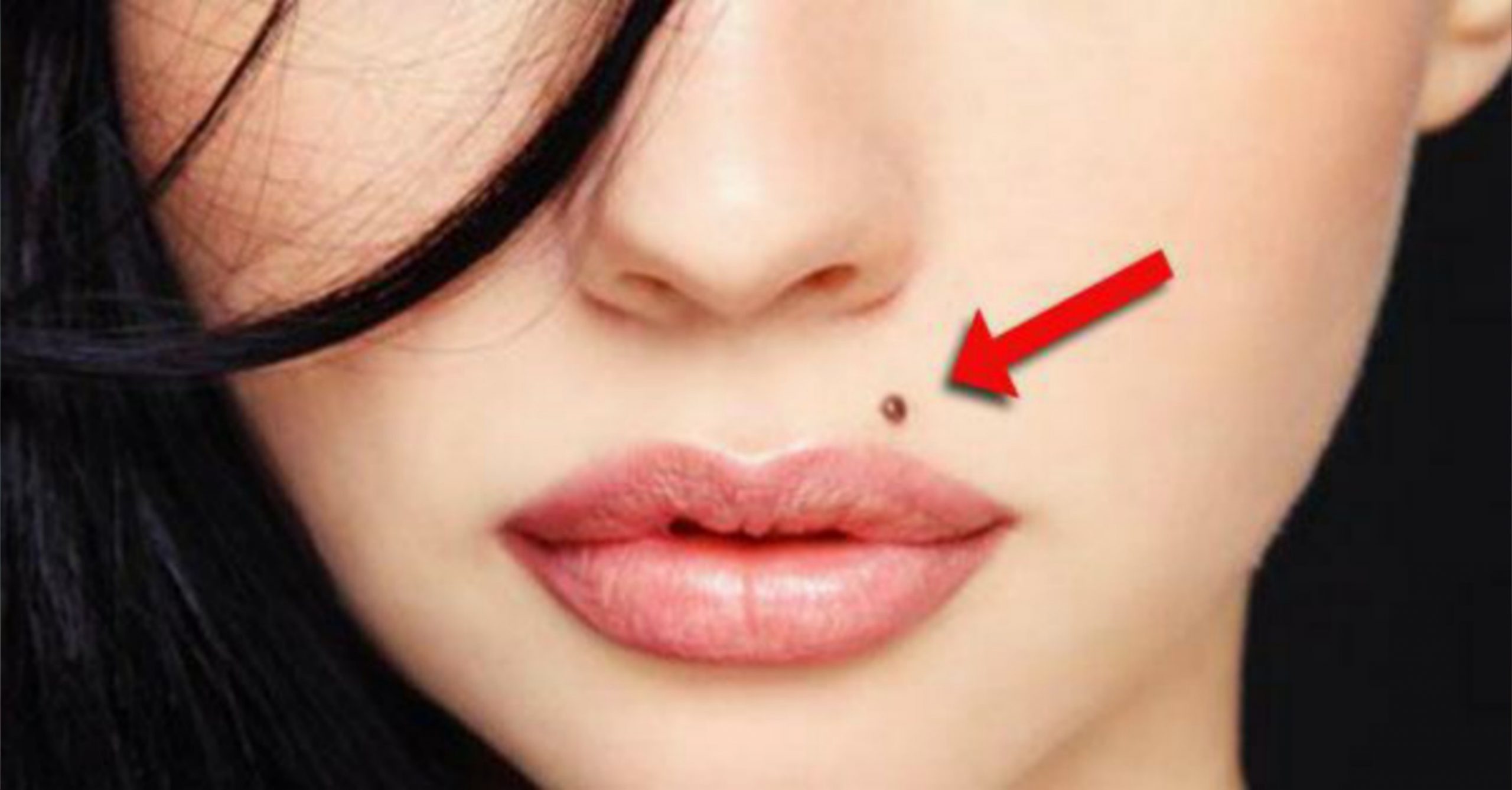 However, only a doctor after a thorough diagnosis can completely eliminate the risks. If black moles behave calmly, do not grow, do not itch, do not hurt, it is enough to be examined by a dermatologist once a year for preventive purposes. However, if a previously light, red or brown mole has turned black, if the neoplasm has changed size and shape, you definitely need to immediately contact a dermatologist. Other signs and symptoms that require medical attention are:
However, only a doctor after a thorough diagnosis can completely eliminate the risks. If black moles behave calmly, do not grow, do not itch, do not hurt, it is enough to be examined by a dermatologist once a year for preventive purposes. However, if a previously light, red or brown mole has turned black, if the neoplasm has changed size and shape, you definitely need to immediately contact a dermatologist. Other signs and symptoms that require medical attention are:
- black mole growing;
- nevus has jagged edges;
- the texture of the surface has changed, there are blotches of a different color on it;
- neoplasm itches, bleeds.
In other words, any changes in the nevus should be alarming. Do not rush to get nervous and panic. Just make an appointment with a dermatologist to make sure this dynamic is safe or get treatment advice.
Fair-haired and fair-skinned people who burn in the sun are at risk. It is also recommended to be checked for people whose close relatives have been diagnosed with cancer.
Never attempt to remove the tumor yourself at home. Such manipulations can lead to skin burns, bleeding of the nevus, and damage to it. Doctors say that trauma and burns of benign moles are one of the common causes of their rebirth.
How are melanoma-dangerous nevi diagnosed? The digital device repeatedly increases the skin cover. Thanks to this, the doctor is able to examine in detail the pattern, texture, structure of the pigment spot and even determine its depth in the layers of the dermis. If the mole causes concern in the specialist, a biopsy and a histological examination are additionally prescribed.
Removal of a black mole: methods
Dangerous black moles are subject to mandatory surgical excision with the capture of adjacent tissues. Benign flat skin formations that are not an aesthetic problem, for example, on the back, can not be removed. However, if a large nevus on the face spoils the appearance, is often exposed to ultraviolet radiation due to its location in an open area of the body, if a convex mole is injured by clothing and accessories, it is also recommended to remove it. Popular treatments for dermatological pathologies of all kinds are:
Popular treatments for dermatological pathologies of all kinds are:
- Cryodestruction. Freezing the neoplasm allows you to remove it. Unfortunately, the surrounding tissues are affected. And it is difficult to control the degree of exposure to liquid nitrogen. Because of this, the skin is severely injured, a long rehabilitation period is required.
- Electrocoagulation and radio wave removal allow the dermatologist-surgeon to work more precisely. However, they have a number of contraindications. For example, electrocoagulation is not performed on people with a pacemaker.
- Laser removal of black moles remains the method of choice for many reasons today.
The advantage of the laser method in MC “Lazersvit”
Laser removal of moles is the right decision. This method is safe, painless, fast. We list all the advantages of the laser method:
- No preliminary preparation is required.
- Although small black moles on the body, a single large formation can be evaporated in one session.

- The procedure is painless, does not take much time, so even a child can endure it without anesthesia.
- A small list of contraindications – laser removal of moles can be done by children, the elderly.
- Gently, pinpoint nevus can be removed not only on the leg or arm, but also under the hair on the head, on the sensitive area of the skin on the abdomen.
- After treatment, there is no need for hospitalization, which means that the patient can immediately return to normal life.
- Nevi are removed very quickly. In a few minutes, the doctor will relieve you of unwanted moles.
- No risk of bleeding as the capillaries are instantly cauterized.
- There is no infection of the wound, as the laser disinfects the site of impact.
After the procedure, a red spot remains on the skin, which becomes covered with a crust. She’ll be gone in a few days. There will be no trace left on the skin either from the presence of a mole or from a micro-operation. All these factors explain why more and more people are choosing laser therapy when they need to remove skin lesions. However, you need to trust only qualified doctors working on modern laser equipment. It is these specialists that are accepted in our medical center “Lazersvit”. We will be glad to help you.
All these factors explain why more and more people are choosing laser therapy when they need to remove skin lesions. However, you need to trust only qualified doctors working on modern laser equipment. It is these specialists that are accepted in our medical center “Lazersvit”. We will be glad to help you.
FAQ
Is it possible to remove a mole without consulting a dermatologist in a beauty salon?
Black moles are removed for medical and cosmetic reasons. If the mole is borderline, dangerous, the doctor must remove it surgically with the capture of surrounding tissues and subsequent histology. Ugly moles on the face can be removed by a dermatologist using one of the methods described above, but only after examining them for goodness.
org/Question”>What complications can occur after laser removal of a nevus?
When performed by an experienced specialist using modern equipment, the removal of neoplasms takes place without complications. The capabilities of the specialized clinic “Lazersvit” allow the most effective, pointwise removal of skin pathologies, providing a high cosmetic result.
Can any mole be removed?
Modern methods allow you to safely remove benign nevi of any shape, any size and on any part of the skin.
 However, recommendations in each case should be given by a dermatologist.
However, recommendations in each case should be given by a dermatologist.
Can a black mole be removed on the same day?
No preparation required for removal of black moles. The procedure can be carried out on the day of treatment if, after dermatoscopy, the doctor confirmed its good quality.
Self-examination – Melanoma Unit Clinic
Melanoma can be detected at an early stage. Each person can play an important role in early detection of skin cancer when it is most likely to be cured.
Self-exam
It is very important to check your own skin, preferably once a month. You should know the location of moles, blemishes, freckles, and other skin marks so that any new moles or changes in existing ones can be noticed.
Self-examination is best done in a well-lit room in front of a full-length mirror. Use a hand mirror to view areas you cannot see, such as the back of your thighs. Examine all areas, including the palms and soles, scalp, ears, nails, and back (in men, about 1 out of every 3 melanomas occurs on the back). Friends and family members can also help you with these exams, especially for areas you can’t see, such as the scalp and back.
What to look out for
Any unusual inflammation, lumps, blemishes, marks, or a change in the appearance or feel of an area of skin can be a sign of skin cancer, or a warning that it might happen.
Normal moles: A normal mole is a uniform brown, tan, or black spot on the skin. A mole can be flush with the skin or raised above its surface. A mole can be round or oval. Moles are usually less than 6 millimeters (about 1/4 inch) in diameter (approximately the diameter of a pencil eraser). A mole may be present at birth, or it may appear during childhood or adolescence. New moles that appear later in life should be checked by a doctor.
Once a mole appears, it usually remains the same size, shape and color for many years. Some moles may disappear over time.
Most people have moles and almost all moles are harmless. But it’s important to recognize changes in a mole—such as its size, shape, or color—that may suggest the development of melanoma.
Possible signs and symptoms of melanoma
The most important warning sign of melanoma is a new spot on the skin or a spot that changes in size, shape and color. Another important sign is a spot that looks different from all other spots on the skin (known as sign of the ugly duckling ). If you have these warning signs, get your skin checked by a doctor.
Another rule for the usual signs of melanoma is rule ABCDE (A – asymmetry, asymmetry of the mole; B – border irregularity, uneven edge; C – color, unequal color of different parts of the mole; D – diameter, the diameter of the mole is more than 6 millimeters; E – evolving, variability of a mole). Be on the lookout and tell your doctor about places that have any of the following:
- A – asymmetry: One half of the mole or birthmark does not match the other.
- B – Edges: Edges rough, torn, serrated or blurry.
- C – Colour: Color varies throughout and may include shades of brown or black, and sometimes with patches of pink, red, white or blue.

- D – diameter: The spot is larger than 6 millimeters (about ¼ inch the size of a pencil eraser), although melanomas can sometimes be smaller than this.
- E – variability: Mole changes in size, shape and color.
- Some melanomas do not fit the above rules. It is very important to tell your doctor about any changes or new spots on your skin or growths that look different from your other moles.
Other warning signs are
- Non-healing wounds.
- Spread of pigment from the edge of the spot to the surrounding skin
- Redness or new swelling beyond the edge
- Change in sensation – itching, soreness or pain
- Change in the surface of the mole – peeling, discharge, bleeding or the appearance of a growth or nodule
Be sure to show your doctor all areas of your skin that are bothering you and ask your doctor to examine areas of your skin that are not visible to you.



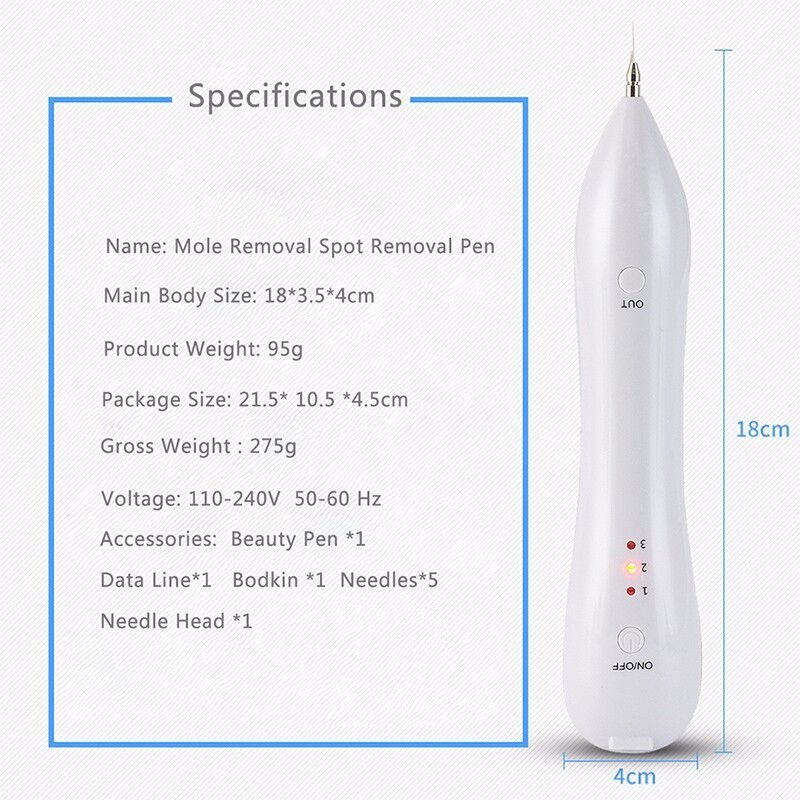 However, recommendations in each case should be given by a dermatologist.
However, recommendations in each case should be given by a dermatologist.